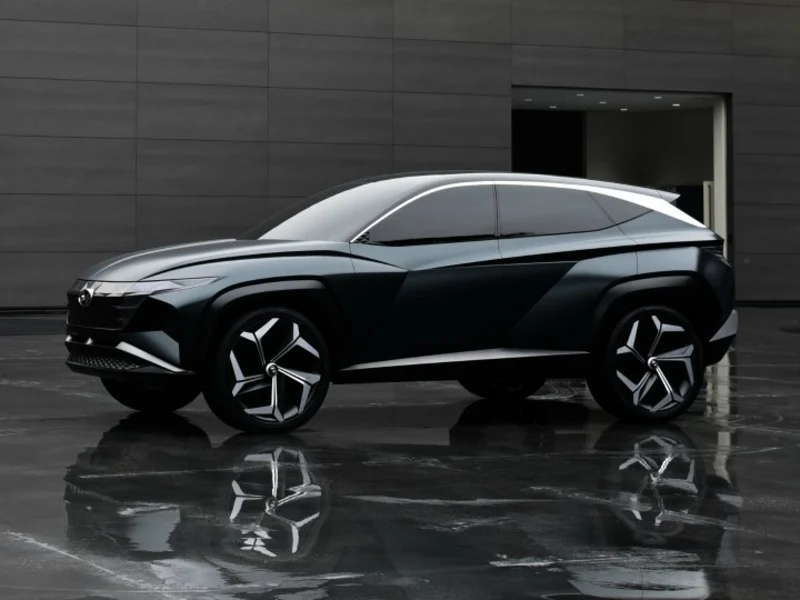Hyundai, the South Korean automotive giant, has established itself not only as a major player in the global automotive market but also as a trendsetter in automotive design. Central to Hyundai’s success has been its distinctive design language, which evolves with each new model to blend innovation with consumer appeal. This article delves into the key elements and principles that define Hyundai’s design philosophy, examining how these aspects contribute to the brand’s identity and market positioning.
The Evolution of Hyundai’s Design Language
Since its inception, Hyundai has undergone a remarkable transformation in terms of design aesthetics. Initially known for functional and economical vehicles, Hyundai gradually shifted towards more dynamic and sophisticated designs. This evolution reflects broader trends in automotive design, where aesthetics play an increasingly crucial role in consumer decision-making.
Early Influences and Development
- Hyundai’s early designs were influenced by Japanese and European automakers, focusing on practicality and affordability.
- The introduction of Peter Schreyer as Chief Design Officer in 2006 marked a significant turning point.
- Schreyer brought a fresh perspective, emphasizing fluidic sculpture and a bold, expressive design language.
Also Read : Exploring Hyundai’s Design Principles
Fluidic Sculpture Era
- From 2010 onwards, Hyundai embraced the “Fluidic Sculpture” design philosophy.
- Characterized by flowing lines and dynamic curves, Fluidic Sculpture aimed to evoke a sense of movement and elegance.
- Examples include the Hyundai Sonata and Hyundai Santa Fe, which received acclaim for their striking designs.
Current Design Language: Sensuous Sportiness
- Hyundai introduced the “Sensuous Sportiness” design philosophy in recent years.
- This approach combines sensuous forms with sporty aesthetics, aiming to captivate the senses and convey a dynamic presence.
- Models like the Hyundai Tucson and Hyundai Elantra showcase this evolution with their bold exteriors and sophisticated interiors.
Key Elements of Hyundai’s Design Language
Understanding Hyundai’s design language involves recognizing several key elements that consistently appear across its vehicle lineup:
1. Cascading Grille
- The cascading grille has become a signature feature of Hyundai vehicles.
- It symbolizes Hyundai’s commitment to modernity and a bold presence on the road.
- Varied interpretations of the grille can be seen across different models, adapting to fit each vehicle’s design character.
2. Parametric Dynamics
- Introduced with the Sensuous Sportiness philosophy, parametric dynamics refer to the intricate patterns and textures found on Hyundai vehicles.
- These elements create visual interest and a sense of depth, enhancing the overall aesthetic appeal.
- Examples include the intricate lighting signatures and geometric patterns integrated into exterior and interior design elements.
3. Sensuous Sportiness
- Central to Hyundai’s current design philosophy is the concept of “Sensuous Sportiness.”
- This philosophy emphasizes emotional design elements that evoke passion and excitement.
- Dynamic proportions, sculpted surfaces, and a sense of movement characterize vehicles designed under this principle.
Influence of Hyundai’s Design Language on Market Success
Hyundai’s design language isn’t merely aesthetic; it plays a crucial role in the brand’s market success and consumer perception.
Global Appeal
- Hyundai’s focus on design has helped the brand appeal to a global audience.
- Distinctive yet adaptable, Hyundai vehicles resonate with diverse cultural and market preferences.
Consumer Preference and Brand Loyalty
- Consumer surveys consistently highlight design as a top consideration for car buyers.
- Hyundai’s commitment to innovative design enhances consumer perception and fosters brand loyalty.
Competitive Edge
- In a competitive market, Hyundai’s unique design language provides a competitive edge.
- It helps differentiate Hyundai from other automakers and reinforces the brand’s image as a leader in design innovation.
Future Directions: Sustainability and Innovation
Looking ahead, Hyundai continues to evolve its design language to address emerging trends and challenges.
Sustainable Design Practices
- Hyundai is increasingly incorporating sustainable materials and eco-friendly design practices.
- This shift reflects growing consumer demand for environmentally responsible vehicles.
Technological Integration
- Advancements in technology, such as electric vehicles and autonomous driving capabilities, influence Hyundai’s design approach.
- Integration of advanced technologies enhances both the functionality and aesthetics of Hyundai vehicles.
Human-Centered Design
- Hyundai places a strong emphasis on human-centered design principles.
- Design elements are tailored to enhance user experience and comfort, aligning with changing consumer expectations.
Conclusion
In conclusion, Hyundai’s design language is a testament to its evolution as a global automotive powerhouse. From the early influences of functionality to the bold expressions of Fluidic Sculpture and Sensuous Sportiness, Hyundai continues to push boundaries in automotive design. By understanding and decoding Hyundai’s design language, consumers and enthusiasts alike gain insight into the brand’s commitment to innovation, aesthetics, and consumer-centric values.
(source)
Originally posted 2024-06-27 03:23:11.
